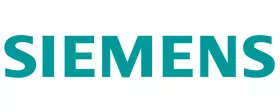Putting 3D IC to work for you
3D IC chiplet-based heterogeneous package integration represents the next major evolution in semiconductor design. It allows us to continue scaling system performance despite the physical limitation. By breaking functional systems into sub-functional chiplets and using advanced packaging integration technologies, we can create more complex, more powerful systems than ever before.
The challenge—and opportunity—for the industry is to lower the barriers to adoption of 3D IC design so that its benefits can become available industry-wide and not just the bleeding edge markets. Thus, the Chiplet Design Exchange (CDX) was formed within the Open Compute Project with the mission of developing easy-to-use, machine-readable design kits (3DKs).
With participation from EDA vendors, foundries, OSATs, and materials providers, the goal was to define standards and workflows for 3D IC design. In other words, a neutral, open foundation that enables efficient chiplet integration and reuse, accelerates innovation, and guarantees manufacturability across organizational boundaries.
To read the full article, click here
Related Chiplet
- Interconnect Chiplet
- 12nm EURYTION RFK1 - UCIe SP based Ka-Ku Band Chiplet Transceiver
- Bridglets
- Automotive AI Accelerator
- Direct Chiplet Interface
Related Blogs
- 3D-IC Design Tools: Cadence Workflows for Planning, Assembly, and Analysis
- Advancing 3D IC Design for AI Innovation
- Using Voltus IC Power Integrity to Overcome 3D-IC Design Challenges
- Marvell Joins Imec Automotive Chiplet Initiative to Facilitate Compute SoCs for Super-human Sensing
Latest Blogs
- 3D-IC Market Outlook: Technology Roadmaps, Readiness, and Design Implications
- Cadence 3D-IC Success Stories: Faster Bandwidth, Lower Power, On-Time Tapeouts
- 3D-IC Test and Reliability: KGD Strategies, Access Architecture, & Failure Mode
- 3D-IC in AI, HPC, and 5G: Bandwidth, Latency, and Energy per Bit Advantages
- Bosch and the chiplet revolution: Enabling software-defined mobility
